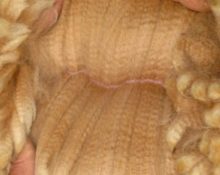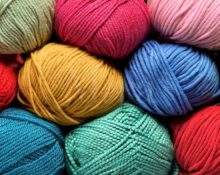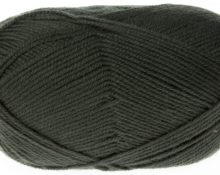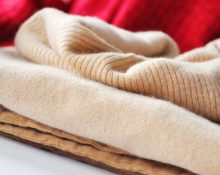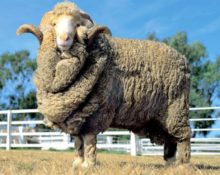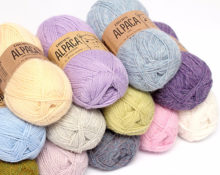Interest in natural materials is growing every year. Among the widely demanded products is merino yarn. It is used to create clothing for tourists and athletes. It is used to make things intended for babies and allergy sufferers. Such popularity and versatility is explained by the origin and consumer qualities of the thread.
What is merino yarn?
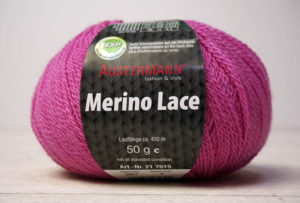 This is carefully combed wool from a special breed of sheep.. Initially, its habitat was Spain, Italy and Greece. Today, fine-wool Merino sheep are bred in all corners of the world, but the largest population is registered in Australia. Here this breed is so widespread that others are practically not found. The former account for 80% of the total number of sheep in the country.
This is carefully combed wool from a special breed of sheep.. Initially, its habitat was Spain, Italy and Greece. Today, fine-wool Merino sheep are bred in all corners of the world, but the largest population is registered in Australia. Here this breed is so widespread that others are practically not found. The former account for 80% of the total number of sheep in the country.
How is it made?
Sheep of this breed are bred specifically for their wool. They are not meaty and weigh too little for that. As the pile increases, the animal is periodically shaved.The resulting raw materials are combed out, and then they are standardized - the quality category is determined. During this process, the material is carefully examined for signs of damage by mites and other parasites. The fibers selected for yarn production are further twisted and heat treated.
Important! These sheep are still eaten as food. Now a subspecies of merino has been bred, whose meat is considered a very healthy and low-fat delicacy.
Composition and types of hair thickness
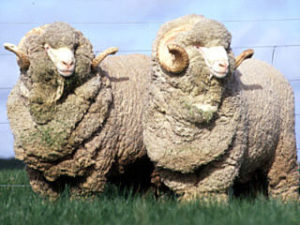 The wool obtained from this breed of sheep has a high price. To reduce the cost, yarn manufacturers weave natural silk or cashmere into a skein, and in New Zealand the list of possible additives is expanded by opossum hair. By adjusting the composition, an expensive, but still affordable product is obtained.
The wool obtained from this breed of sheep has a high price. To reduce the cost, yarn manufacturers weave natural silk or cashmere into a skein, and in New Zealand the list of possible additives is expanded by opossum hair. By adjusting the composition, an expensive, but still affordable product is obtained.
Important! Merino is characterized by fine hair. Average: 15–25 microns.
The type of additives and their quantity affects the thickness of the thread. According to this criterion, yarn is divided into 4 categories:
- 1st. It's called "Merino". It accounts for ¾ of all yarn for hand knitting. Hair thickness: 20–22.5 microns.
- 2nd. Super fine yarn. Only 15% of products fall into this category. Villus thickness: 18–20 microns.
- 3rd. Extra fine yarn. The market share of such merino yarn is 5–7%. Thickness: 16–17 microns.
- 4th. Summer and thinnest variety (14–15 microns). It is extremely rare (about 0.01% of the assortment).
Properties
The fur is soft, thin, fluffy and long. They have a tortuous porous structure and are tensile-resistant. Things made from them are classified as thermal clothing due to the fact that they do not interfere with heat transfer, protect well from external factors and help maintain a healthy body temperature. The healing properties of merino are also widely known. The principle of dry heat is used by orthopedists, gynecologists and endocrinologists.
Advantages and disadvantages
 Safety – one of the key positive properties. Doctors allow me to knit things for babies from merino wool. Allergies to such clothing are less common than to other types of wool. In addition, the thread is treated with lanolin, a natural substance that is in demand in medicine and cosmetology. In terms of its chemical composition, it resembles human lard, which is why the skin of a newborn reacts adequately to contact with things made from merino wool.
Safety – one of the key positive properties. Doctors allow me to knit things for babies from merino wool. Allergies to such clothing are less common than to other types of wool. In addition, the thread is treated with lanolin, a natural substance that is in demand in medicine and cosmetology. In terms of its chemical composition, it resembles human lard, which is why the skin of a newborn reacts adequately to contact with things made from merino wool.
The second key positive quality is natural shade of wool. It is not gray or beige, but snow-white. To acquire this shade, other types of animal fibers go through multi-stage processing.
Third feature: demand in medical circles. Doctors attribute wearing merino clothing to people suffering from osteochondrosis, rheumatism, edema and respiratory diseases.
Other advantages of yarn and wardrobe items made from it:
- softness;
- easy to knit;
- elasticity;
- warms well;
- absorbs sweat well;
- allows the skin to “breathe”.
Due to the excellent stretchability and softness of the yarn, products made from it fit well and convey the curves of the figure. However, these same qualities turn into a problem at the time of drying. If you place an item on top of the dryer, the clothes will get indentations from the pipes.
Merino yarn is also credited with qualities whose presence is questionable:
- beneficial effect on the skin (the theory is based on the fact that lanolin perfectly penetrates the deep structures of the dermis and nourishes them);
- repels dirt (other types of wool attract dust, but according to the manufacturers, this type, due to the special cellular structure of the fiber, perfectly resists dirt and small particles of debris);
- It warms even when wet.
The latter theory is actively promoted by manufacturers of sports and travel clothing. They back up their statement with research, but research conducted in their own laboratories. The results of independent examinations are not provided.
If some of the attributed positive qualities are questionable, the shortcomings of merino are easily noticeable. Key "cons":
- high price;
- relatively high yarn consumption;
- the finished item will require delicate handling.
The wear resistance of merino clothing only appears when they know how to care for the item. Improper handling will lead to frizz and coarsening of the pile.
Classification by twist method
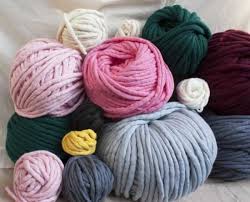 The yarn does not consist of 1 hair, but of several. If from 2, then such a product is called single-strand or single-twist. As the number of weaves increases, the yarn becomes multi-twisted.
The yarn does not consist of 1 hair, but of several. If from 2, then such a product is called single-strand or single-twist. As the number of weaves increases, the yarn becomes multi-twisted.
The thickness of the thread largely depends on the number of weaves. According to this criterion, thick, thin, superfine and summer merino yarn are distinguished. The first is suitable for sweaters, warm socks, mittens and hats, vests. Thin fabric is used to make turtlenecks and leg warmers, and summer fabric is used to make children’s outfits for wearing on warm days.
Features of caring for items made from merino yarn
Items made from merino yarn require delicate handling. To maintain the integrity of the pile and the softness of the product, if possible, you should:
 refrain from soaking;
refrain from soaking;- Handwash only;
- squeeze;
- use soft water at the same temperature at all stages of washing;
- Do not use bleaches, granular powders or strong chemicals.
If you cannot do without soaking, then the time the item stays in water should be reduced to 20–50 minutes. In terms of drying, the requirements are even more stringent, which is explained by the tendency of the yarn to stretch. Merino clothes should not be hung on a radiator, by clothespins or on a dryer. It is placed on an outstretched towel. Another one is added on top. As the towels get wet, they are replaced with new ones.
Important! Drying only in a horizontal position and on a flat surface is permissible.


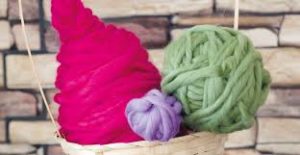 refrain from soaking;
refrain from soaking; 1
1